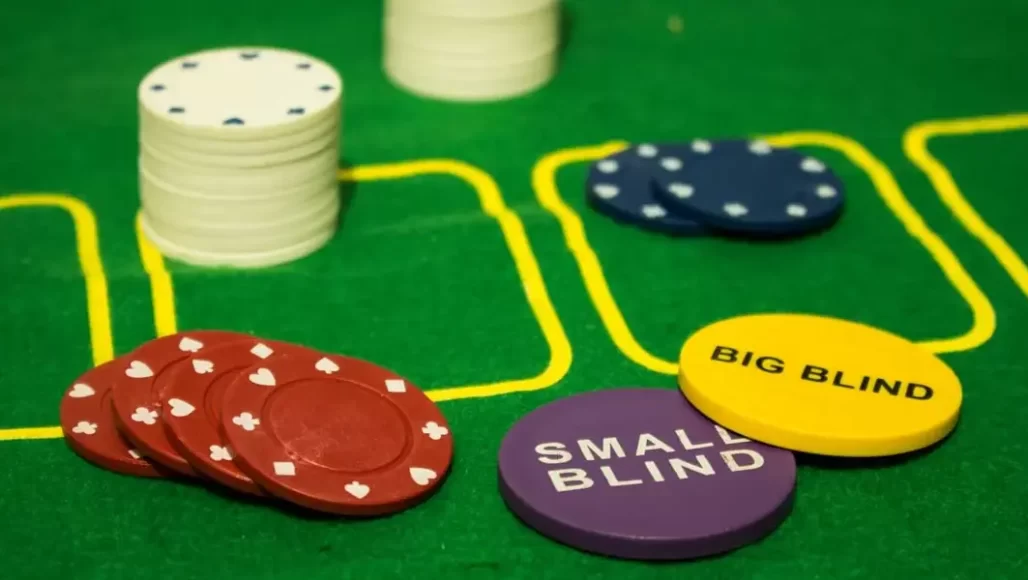Understanding Poker Blinds: A Comprehensive Guide

In the world of poker, particularly Texas Hold’em and Omaha, blinds are an integral part of the game. They play a crucial role in driving action and shaping strategy. For those new to the game or looking to refine their understanding, the concept of poker blinds can initially seem a bit daunting. This guide aims to demystify poker blinds, offering a detailed exploration of what they are, how they work, and their strategic importance. Understanding blinds is not only essential for poker enthusiasts but also for those who enjoy a variety of casino games, including famous slots, where different betting structures and strategies can similarly influence gameplay.
What Are Blinds in Poker?
Blinds are mandatory bets that players must make before the start of each hand in poker games such as Texas Hold’em and Omaha Poker. They are designed to ensure that there is always money in the pot to play for and to prevent players from folding without putting any money at risk. The blinds consist of two distinct components: the small blind and the big blind.
The small blind is posted by the player seated immediately to the left of the dealer button, while the big blind is placed by the player to their left. The big blind is typically double the amount of the small blind. This structure forces action and encourages strategic play, as players must decide how to proceed with their hands knowing that a portion of their chips has already been committed to the pot. As the game progresses through different levels, the amounts of the blinds increase, further adding to the dynamics and strategic complexity of the game.
Big Blind and Small Blind Explained

Small Blind: The small blind is the first bet that is placed before the start of the hand. It is typically half of the amount of the big blind and is posted by the player sitting immediately to the left of the dealer. For instance, in a game with a big blind of $100, the small blind would be $50. This player’s position and the blind amount can vary based on the specific game structure and stakes.
Big Blind: The big blind is the second mandatory bet and is placed by the player sitting directly to the left of the small blind. The big blind is typically equal to the minimum bet for that round and is usually double the amount of the small blind. In our previous example, the big blind is $100. This position rotates around the table with each hand, ensuring that all players contribute to the pot in a balanced manner over time.
How Poker Blinds Work
In a standard game, blinds rotate clockwise around the table after each hand, ensuring that each player posts the small blind and big blind at different intervals. This rotation is fundamental to maintaining fairness in the game. The blinds are essential in creating action and forcing players to make decisions with incomplete information.
When a hand begins, the player in the small blind posts their bet, followed by the big blind. The remaining players are then given the opportunity to call, raise, or fold. The introduction of the blinds encourages active play and keeps the game moving forward.
The Importance of Poker Blinds
Blinds serve several critical functions in poker:
- Driving Action: By requiring players to put money into the pot before seeing their cards, blinds create an immediate incentive to compete for the pot. This helps to prevent the game from becoming stagnant and ensures that players remain engaged.
- Shaping Strategy: The position of the blinds can significantly influence strategy. Players in the blind positions often need to play more conservatively due to the forced bets. Conversely, players acting after the blinds can leverage their positional advantage to make strategic decisions based on the bets already in play.
- Determining Pot Size: The blinds contribute to the size of the pot and the amount of money that players are competing for. This can affect betting patterns and overall strategy during the hand.
Poker Blinds Chart: Understanding the Structure
To provide a clearer picture of how blinds operate in various games, here is a basic poker blinds chart for different stakes:
| Game Type | Small Blind | Big Blind |
|---|---|---|
| Low Stakes | $1 | $2 |
| Mid Stakes | $5 | $10 |
| High Stakes | $50 | $100 |
| Tournament | Varies by level | Varies by level |
This chart illustrates how the amount of blinds can vary based on the stakes and format of the game. In tournaments, poker blinds increase over time, a structure known as “blind levels,” to escalate the action and ensure that the tournament progresses toward a conclusion.
Strategic Considerations with Blinds

Understanding the blinds’ role is essential for developing a solid poker strategy. Here are some strategic tips:
- Defending the Blind: Poker players in the blind positions need to be cautious but also proactive. Defending the blind requires a balance between protecting the forced bet and not overcommitting with marginal hands.
- Exploiting the Blinds: Players not in the blind positions can use their advantage to apply pressure on the blinds. This may involve raising or re-raising to force the players in the blinds to make difficult decisions.
- Position Awareness: The position relative to the blinds affects decision-making. Being aware of your poker position and understanding how the blinds impact the pot and player behavior can help in making more informed decisions.
Conclusion
Poker blinds are a fundamental aspect of the game that significantly impacts strategy, action, and overall gameplay. By understanding what blinds are, how they function, and their strategic implications, players can improve their game and approach each hand with greater confidence. Whether you are new to poker or an experienced player, mastering the concept of blinds is key to becoming a more skilled and strategic poker player.
By grasping the nuances of the small blind and big blind explained in this guide, you’ll be better equipped to navigate the complexities of poker and enhance your gameplay. The poker blinds chart and strategic tips provided will serve as valuable resources as you continue to develop your skills and understanding of the game.
FAQ
Poker blinds are mandatory bets that players must make before the start of each hand in poker games like Texas Hold’em and Omaha. They consist of the small blind and the big blind and are used to ensure there is always money in the pot and to stimulate action.
The small blind is posted by the player immediately to the left of the dealer button, while the big blind is placed by the player to their left. The big blind is typically double the amount of the small blind.
Blinds are used to create a pot for players to compete for and to prevent players from folding without risking any chips. They also encourage strategic play and ensure that the game progresses by forcing players to act.
Blinds force players to make strategic decisions about their hands and bets. Since chips are already in the pot, players must weigh their options carefully when deciding to call, raise, or fold. The amount of the blinds increases at various levels, which adds complexity and keeps the game dynamic.
Yes, blinds typically increase at regular intervals as the game progresses. This escalation is part of the tournament structure or cash game rules and helps to maintain a competitive environment by ensuring that players cannot sit on their chips indefinitely.
If a player fails to post the blinds, they may be penalized according to the house rules. In tournaments, this often results in a forfeiture of the player’s chips or a forced all-in. In cash games, the player may be required to post both the small and big blinds to rejoin the game.
Yes, in home games, players can agree to adjust the blinds to fit their preferences or to create a more enjoyable playing experience. However, it’s important for all players to agree on any changes to maintain fairness.
Blinds are specific to poker games and are different from other betting structures, such as antes, which require all players to contribute to the pot before the hand begins. Understanding these differences can help players adapt their strategies across various casino games, including slots and other table games.